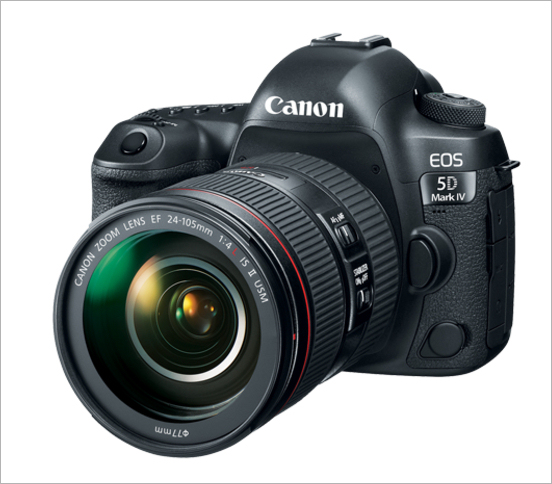
30.4 Megapixel Full-frame CMOS Sensor
The EOS 5D Mark IV camera has a full-frame, high-speed CMOS sensor. Measuring approximately 36.0mm x 24.0mm, the same size and ratio as a 35mm film frame, it records 30.4 effective Megapixels at normal ISOs of up to 32000. It also captures still and 4K video clips suitable for significant post-processing, retouching and cropping.
ISO 100–32000 (expandable to 50–102400)
Featuring an ISO range of 100–32000 (expandable to 50–102400), the EOS 5D Mark IV camera is well-suited for low-light photography. Its sensor has an improved S/N ratio plus an improved noise-processing algorithm to help deliver high light sensitivity along with its high resolution, with virtually no compromise in image quality.
The EOS 5D Mark IV is also a highly capable video camera. Thanks to its CMOS sensor and its high-speed DIGIC 6+ Image Processor, it can quickly transition from taking still photographs to shooting videos, capturing Digital Cinema (DCI) standard 4K (Motion JPEG) videos of 4096 x 2160 pixels at up to 30 or 24 fps*. It also supports the 4K broadcasting standard of 3840 x 2160 pixels with slight trimming on the left and right sides. Featuring advanced Live View operation and responsive Dual Pixel CMOS AF, the EOS 5D Mark IV has a touch panel display with focus points that can easily be selected during operation, and quickly confirmed by selecting and saving an 8.8-Megapixel image with in-camera 4K still frame grab**. Along with capturing 4K videos, the EOS 5D Mark IV is equally able to shoot Full HD video at up to 60p plus HD at frame rates as high as 120p, ideal for smooth slow-motion video. It also supports both MOV and MP4 formats for a variety of applications right out of the camera.
Dual Pixel CMOS AF
The EOS 5D Mark IV camera utilizes Canon’s Dual Pixel CMOS AF. With two photodiodes per pixel and each pixel capable of phase-difference detection autofocus, the CMOS sensor can deliver fast and accurate AF over approximately 80% of the image plane. Able to detect shifts in movement at the pixel level, Dual Pixel CMOS AF enables continuous automatic AF and AF tracking that enhances overall camera operation for sharp still images and smooth, accurate focus transitions in movies.
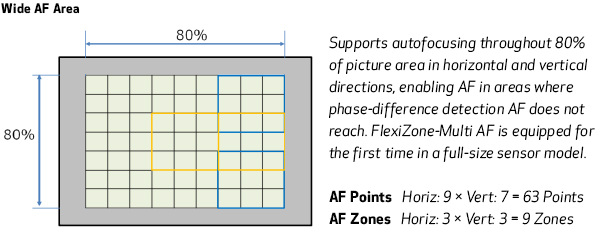
3.2" Touch Panel LCD
The EOS 5D Mark IV camera features a 1.62 million dot, low-reflection 3.2-inch Clear View LCD II monitor. The LCD’s touch panel surface allows AF frame switching, menu and setting changes plus image magnification during Live View shooting and movie shooting. A customizable Quick Control screen adds flexibility and convenience for specific users’ preferences.
Up to 7.0 fps Continuous Shooting
The EOS 5D Mark IV is capable of shooting at up to 7.0 fps**, even at full resolution. Continuous shooting speed may vary depending on the shutter speed, the aperture, the lens being used, the battery charge and various camera settings.
DIGIC 6+ Image Processor
The DIGIC 6+ Image Processor increases the EOS 5D Mark IV camera’s in-camera capabilities, enabling fast operation across the board and helping to ensure that high-quality still image and 4K video recording is achieved no matter the shooting environment. It has a noise-processing algorithm that helps reduce noise at high ISO settings, and features a Digital Lens Optimizer that can automatically apply a variety of aberration and diffraction corrections as well as other corrective measures specific to the lens in use.
61-point High Density Reticular AF II system
The EOS 5D Mark IV camera incorporates a 61-point High Density Reticular AF II system. It features up to 41 cross-type points and an extensive AF area that extends well into the top and bottom of the peripheral frame. It also has a wide subject tracking area that enhances the AF system with consistent focus tracking to capture the action at hand and includes Canon’s AI Servo AF III, which remembers the AF path and helps refine precision shot-to-shot. Low-light performance is phenomenal – the AF system’s low-intensity limit is EV -3 at the center AF point and all 61 AF points are compatible down to f/8 for excellent low-light performance, even with lens extenders attached. To help ensure that AF points and other shooting information are visible at a glance, the EOS 5D Mark IV also features Canon’s Intelligent Viewfinder II for a bright, customizable view. Whether choosing individual AF points manually or using one of the camera’s automatic AF selection modes, the EOS 5D Mark IV’s AF system is a significant part of its overall excellence.
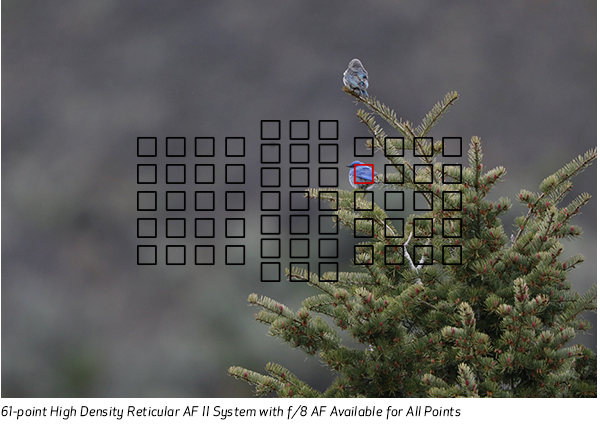
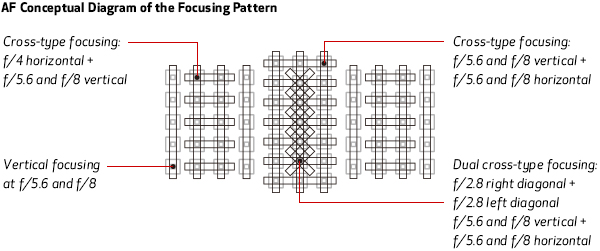
The EOS 5D Mark IV camera employs the iSA Intelligent Scene Analysis system uses its own RGB+IR light sensor with an approximately 150,000-pixel resolution to provide the camera with image analysis, making necessary corrections along the way. The sensor enables Canon’s anti-flicker function, which detects the frequency and phase of a light source’s flicker (such as a fluorescent light) and captures images near the point of peak brightness when the subject is most likely to be well-illuminated. The EOS 5D Mark IV also incorporates Canon’s Intelligent Tracking and Recognition system (iTR AF) that detects and tracks subjects, automatically switching the AF point to optimize tracking. Using tracking algorithms tailored to recognize faces and colors, this system not only helps to quickly and automatically select the ideal capture settings, but also serves as a brilliant foundation to the EOS 5D Mark IV’s AF system.
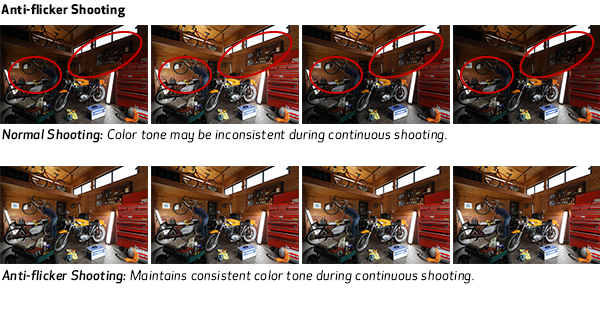
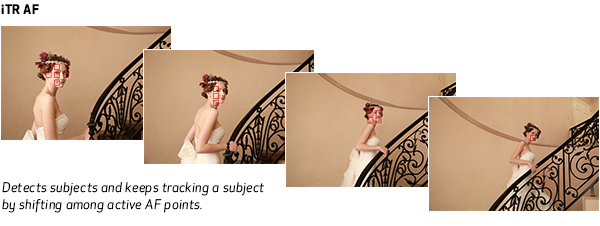
The EOS 5D Mark IV camera is equipped with a number of advanced features designed to combat image degradation from lens aberration, focus and other characteristics that can adversely affect the quality of the final image. The EOS 5D Mark IV’s Dual Pixel CMOS AF system enables capture of Dual Pixel Raw (DPRAW) files***. Images shot as DPRAWs have additional adjustment possibilities when processed with Canon’s Digital Photo Professional image processing software, which enables pixel-level adjustment and refinement for still photographs and includes Image Micro-adjustment to help maximize sharpness in detail areas, Bokeh Shift for more pleasing soft focus areas and Ghosting Reduction to help reduce aberrations and flare. The EOS 5D Mark IV camera is also equipped with a number of in-camera optical correction functions previously available only using Digital Photo Professional. It comes preloaded with aberration data particular to specific lenses, helping to eliminate the need to register lens data on previously released lenses and correcting images with virtually no delay in-camera. The EOS 5D Mark IV not only fixes peripheral brightness and chromatic aberration, but also features distortion correction and diffraction correction. Distortion correction helps resolve barrel and pincushion distortions, while diffraction correction helps to eliminate the blurring effects from diffraction that can be created when capturing an image at a small aperture. The EOS 5D Mark IV’s in-camera Digital Lens Optimizer works with the camera’s DIGIC 6+ Image Processor to help ensure these corrections can be made with virtually no effect on operational speed, even when shooting numerous successions of JPEG images, speeding up the photographer’s workflow and delivering gorgeous images right from the camera.
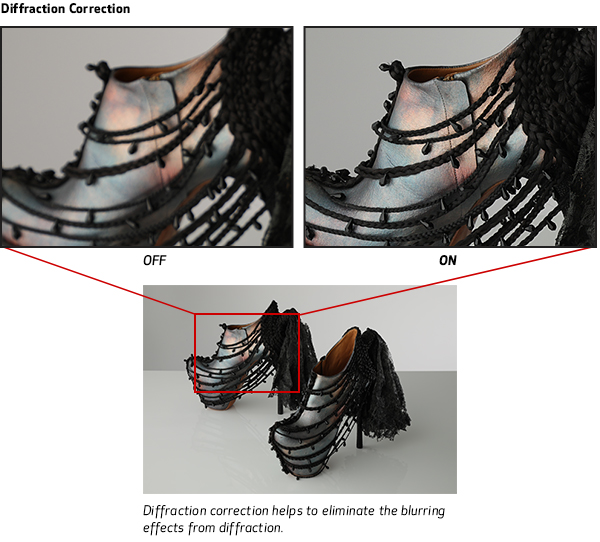
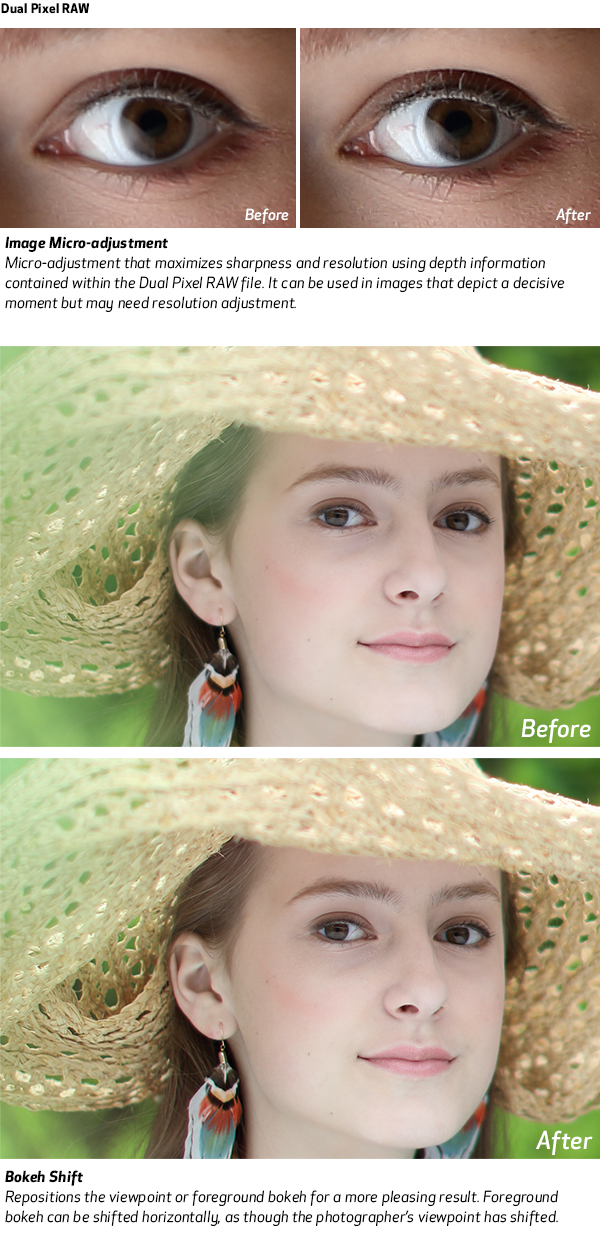
*** When lens diaphragm setting is fully open, adjustment volume and compensation effect are emphasized. Sufficient adjustment volume and compensation effect may not be achieved, depending on lens in use and shooting conditions. Adjustment volume and compensation effect vary depending on camera position (landscape or portrait).
For a useful and quick workflow in a variety of locations, the EOS 5D Mark IV camera’s built-in Wi-Fi®^ feature can help streamline camera operations across the board. Using the free Canon Camera Connect app^ on a compatible iOS® or Android™ device, the EOS 5D Mark IV can easily be set up to shoot remotely from a distance, even in Live View mode, with complete control of settings such as aperture, shutter speed, ISO, focus and shutter release. Image review and transfer are similarly fast and easy without ever having to take the camera out of its bag. Full DLNA (Digital Living Network Alliance) compatibility means easy sharing between the EOS 5D Mark IV and other DLNA products, such as HDTVs and compatible smartphones. Still images can even be transferred between two wireless-enabled Canon cameras over a Local Area Network (LAN). Images and video can also be uploaded instantly to CANON iMAGE GATEWAY# for easy sharing on social networking sites, and photos can even be printed on a wireless PictBridge-certified printer without the need for a PC. For more robust Wi-Fi® connections, the EOS 5D Mark IV is also compatible with Canon’s optional Wireless File Transmitter WFT-E7, which supports 2.4GHz/5GHz frequency bands, multiple camera sync and can extend the EOS 5D Mark IV’s operating range up to 10 times that of the camera’s built-in Wi-Fi®.

^ Compatible with iOS® versions 8.4/9.3/10.2, Android™smartphone and tablet versions 4.1/4.2/4.3/4.4/5.0/5.1/6.0/7.0/7.1. Data charges may apply with the download of the free Canon Camera Connect app. This app helps enable you to upload images to social media services. Please note that image files may contain personally identifiable information that may implicate privacy laws. Canon disclaims and has no responsibility for your use of such images. Canon does not obtain, collect or use such images or any information included in such images through this app.
# One-time registration is required on CANON iMAGE GATEWAY online photo album.
Built-in NFC Technology
Built-in NFC (Near Field Communication) technology helps provide the EOS 5D Mark IV camera with a virtually seamless connection to compatible Android™ devices^^. Simply tap to connect and transfer images and videos. It’s also compatible with the Canon Connect Station CS100 device, which makes it simple for photographers and moviemakers to view and organize all their photos and videos from one connected device.
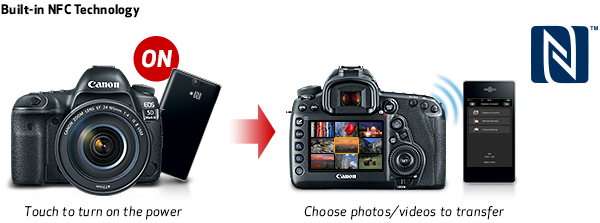

Certain images and effects simulated.
^^ Compatible with Android™ smartphone and tablet versions 4.1/4.2/4.3/4.4/5.0/5.1/6.0/7.0/7.1.
For news photographers capturing hundreds or even thousands of images while moving around throughout the day, landscape photographers on location and even photographers on vacation, GPS has become an indispensable part of a daily workflow. The EOS 5D Mark IV camera’s built-in GPS helps photographers and filmmakers both tag their images with critical location data, and also adjust the time and timestamp on the camera automatically. Featuring both built-in GPS^^^ and Wi-Fi®^ technology, the EOS 5D Mark IV can use GPS and WFT (Wireless File Transfer) together, making it easy to upload numerous images and movies both quickly and from increasingly distant locales. Compatible with American GPS satellites, Russian GLONASS satellites and Japanese quasi-zenith satellites Michibiki, the EOS 5D Mark IV’s GPS information stays reliably accurate in many locations.
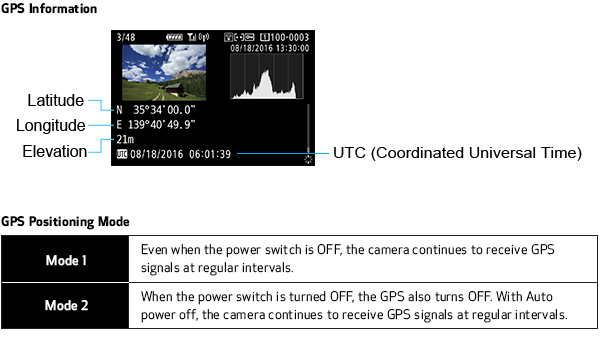
^^^ In certain countries and regions, the use of GPS may be restricted. Therefore be sure to use GPS in accordance with the laws and regulations of your country or region. Be particularly careful when traveling outside your home country. As a signal is received from GPS satellites, take sufficient measures when using in locations where the use of electronics is regulated.
^ Compatible with iOS® versions 8.4/9.3/10.2, Android™ smartphone and tablet versions 4.1/4.2/4.3/4.4/5.0/5.1/6.0/7.0/7.1. Data charges may apply with the download of the free Canon Camera Connect app. This app helps enable you to upload images to social media services. Please note that image files may contain personally identifiable information that may implicate privacy laws. Canon disclaims and has no responsibility for your use of such images. Canon does not obtain, collect or use such images or any information included in such images through this app.
The EOS 5D Mark IV camera can be a more sophisticated moviemaking tool by adding Canon Log through an optional feature upgrade. Once the camera is upgraded, you can use the Canon Log mode to record 4K and Full HD video files that feature an increased dynamic range of up to approx. 800% or 12 stops (at ISO 400 or above), ideal for extensive post-production processing. For professional users and anyone who wants to get the most out of the EOS 5D Mark IV’s brilliant CMOS sensor, Canon Log can be an indispensable function.
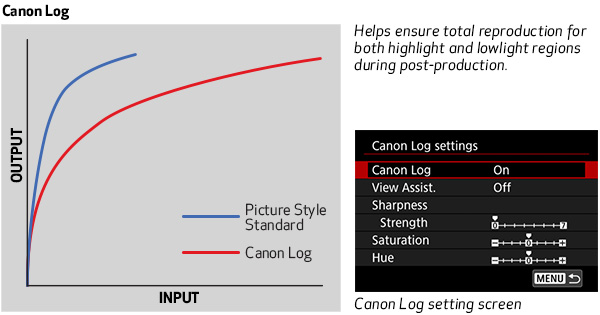
Current EOS 5D Mark IV camera owners will be able to receive the Canon Log upgrade for a fee by sending the camera to a Canon Factory Service Center. For details, click here.
For users looking to purchase the camera with the Canon Log feature already installed, please visit
EOS 5D Mark IV Body with Canon Log.
Notes about Image Quality with Canon Log:
When Canon Log is set, horizontal noise stripes may appear in movies depending on subject or shooting conditions. It is recommended to shoot a few test movies and check before the actual shooting. Note that noise may become more noticeable especially when you apply strong contrast during color grading of the shot movie.
Horizontal noise stripes tend to appear when the subject is dark and flat or [Peripheral illum.] is set to [Enable]. This noise may also appear when ISO speed is relatively low, such as at ISO 400.
When the noise is noticeable, it is recommended to set [Peripheral illum.] to [Disable], shoot in brighter exposure, and perform brightness adjustment during color grading. Also, noise may be decreased when you shoot at ISO speed lower than ISO 400 (even though the dynamic range will be narrowed).















